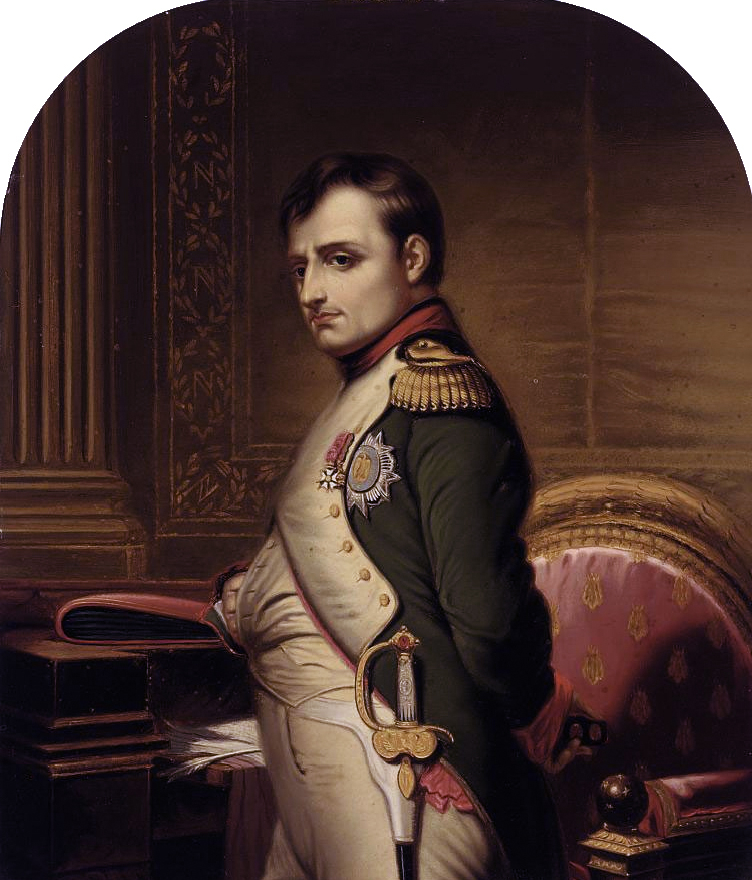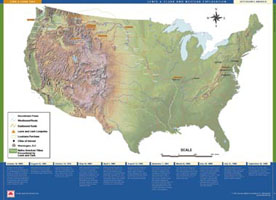what land were monroe and livingston sent to france to buy
The Louisiana Buy (1803) was a land deal betwixt the United States and French republic, in which the U.South. acquired approximately 827,000 square miles of country west of the Mississippi River for $15 million.
[T]his little event, of France possessing herself of Louisiana, ... is the embryo of a tornado which will burst on the countries on both shores of the Atlantic and involve in it's furnishings their highest destinies.1
President Thomas Jefferson wrote this prediction in an April 1802 letter to Pierre Samuel du Pont among reports that Spain would retrocede to France the vast territory of Louisiana. As the United States had expanded westward, navigation of the Mississippi River and access to the port of New Orleans had become critical to American commerce, and so this transfer of authority was cause for concern. Within a week of his alphabetic character to du Pont, Jefferson wrote U.S. Minister to France Robert Livingston: "every center in the US. is now fixed on this affair of Louisiana. perhaps nothing since the revolutionary war has produced more uneasy sensations through the body of the nation."2
 Play
Play The Fry-Jefferson Map of Virginia
Background
The presence of Spain was non and then provocative. A conflict over navigation of the Mississippi had been resolved in 1795 with a treaty in which Spain recognized the United States' right to use the river and to deposit appurtenances in New Orleans for transfer to oceangoing vessels. In his letter to Livingston, Jefferson wrote, "Espana might have retained [New Orleans] quietly for years. her pacific dispositions, her feeble state, would induce her to increase our facilities there, and so that her possession of the identify would be hardly felt by us." He went on to speculate that "it would not mayhap be very long before some circumstance might ascend which might brand the cession of it to us the price of something of more than worth to her."3
 Napoleon Bonaparte by Paul Delaroche
Napoleon Bonaparte by Paul Delaroche
Jefferson'southward vision of obtaining territory from Spain was altered by the prospect of having the much more than powerful France of Napoleon Bonaparte as a next-door neighbor.
France had surrendered its North American possessions at the end of the French and Indian War. New Orleans and Louisiana west of the Mississippi were transferred to Spain in 1762, and French territories east of the Mississippi, including Canada, were ceded to United kingdom of great britain and northern ireland the next year. Only Napoleon, who took power in 1799, aimed to restore France'south presence on the continent.
The Louisiana situation reached a crisis point in Oct 1802 when Espana's Male monarch Charles IV signed a decree transferring the territory to French republic and the Castilian amanuensis in New Orleans, acting on orders from the Spanish courtroom, revoked Americans' admission to the port's warehouses. These moves prompted outrage in the United States.
 1815 Plan of New Orleans by I. Tanesse; courtesy the Library of Congress
1815 Plan of New Orleans by I. Tanesse; courtesy the Library of Congress
While Jefferson and Secretary of State James Madison worked to resolve the issue through diplomatic channels, some factions in the West and the opposition Federalist Political party chosen for war and advocated secession by the western territories in order to seize control of the lower Mississippi and New Orleans.
Negotiations
Enlightened of the need for action more than visible than diplomatic maneuvering and concerned with the threat of disunion, Jefferson in January 1803 recommended that James Monroe join Livingston in Paris as minister extraordinary. (Later that same month, Jefferson asked Congress to fund an expedition that would cross the Louisiana territory, regardless of who controlled it, and proceed on to the Pacific. This would become the Lewis and Clark Expedition.) Monroe was a close personal friend and political ally of Jefferson'south, just he also owned land in Kentucky and had spoken openly for the rights of the western territories.
 Boundaries of the Louisiana Buy
Boundaries of the Louisiana Buy
Jefferson urged Monroe to accept the posting, saying he possessed "the unlimited confidence of the administration & of the Western people." Jefferson added: "all eyes, all hopes, are at present fixed on you, .... for on the result of this mission depends the future destinies of this republic."4
Shortly thereafter, Jefferson wrote to Kentucky'south governor, James Garrard, to inform him of Monroe's appointment and to assure him that Monroe was empowered to enter into "such arrangements every bit may effectually secure our rights and involvement in the Mississipi, and in the country Eastward of that."5
As Jefferson noted in that letter, Monroe'due south charge was to obtain country e of the Mississippi. Monroe'due south instructions, drawn up past Madison and canonical by Jefferson, allocated up to $ten one thousand thousand for the purchase of New Orleans and all or part of the Floridas. If this bid failed, Monroe was instructed to attempt to purchase just New Orleans, or, at the very least, secure U.S. access to the Mississippi and the port.
But when Monroe reached Paris on April 12, 1803, he learned from Livingston that a very different offer was on the table.

Plan du Siège de Santo Domingo. Courtesy of the Library of Congress.
Napoleon'due south plans to re-establish France in the New Globe were unraveling. The French army sent to suppress a rebellion past slaves and gratis blacks in the sugar-rich colony of Saint Domingue (present-mean solar day Republic of haiti) had been decimated by xanthous fever, and a new state of war with Britain seemed inevitable. France's government minister of finance, François de Barbé-Marbois, who had always doubted Louisiana's worth, counseled Napoleon that Louisiana would be less valuable without Saint Domingue and, in the event of war, the territory would probable exist taken past the British from Canada. France could not afford to transport forces to occupy the entire Mississippi Valley, and so why not carelessness the idea of empire in America and sell the territory to the United states of america?
Napoleon agreed. On Apr eleven, Foreign Minister Charles Maurice de Talleyrand told Livingston that France was willing to sell all of Louisiana. Livingston informed Monroe upon his arrival the next mean solar day.
Seizing on what Jefferson later called "a avoiding occurrence," Monroe and Livingston immediately entered into negotiations and on Apr 30 reached an agreement that exceeded their authority — the purchase of the Louisiana territory, including New Orleans, for $15 million. The acquisition of approximately 827,000 foursquare miles would double the size of the United States.
Though rumors of the purchase preceded notification from Monroe and Livingston, their message reached Washington in fourth dimension for an official declaration on July 4, 1803.
 The Louisiana Purchase Treaty
The Louisiana Purchase Treaty
The purchase treaty had to exist ratified by the end of Oct, which gave Jefferson and his Cabinet time to deliberate the problems of boundaries and constitutionality. Exact boundaries would accept to be negotiated with Spain and England and so would not be set for several years, and Jefferson'due south Cabinet members argued that the constitutional amendment he proposed was not necessary. As fourth dimension for ratification of the purchase treaty grew short, Jefferson accepted his Cabinet's counsel and rationalized: "it is the case of a guardian, investing the money of his ward in purchasing an of import adjacent territory; & saying to him when of age, I did this for your good."6
The Senate ratified the treaty on Oct 20 by a vote of 24 to 7. Kingdom of spain, upset past the sale merely without the military power to block it, formally returned Louisiana to France on November xxx. France officially transferred the territory to the Americans on December 20, and the Us took formal possession on Dec 30.
Jefferson'due south prediction of a "tornado" that would burst upon the countries on both sides of the Atlantic had been averted, but his belief that the thing of Louisiana would impact upon "their highest destinies" proved prophetic indeed.
Source: https://www.monticello.org/thomas-jefferson/louisiana-lewis-clark/the-louisiana-purchase/
0 Response to "what land were monroe and livingston sent to france to buy"
Post a Comment